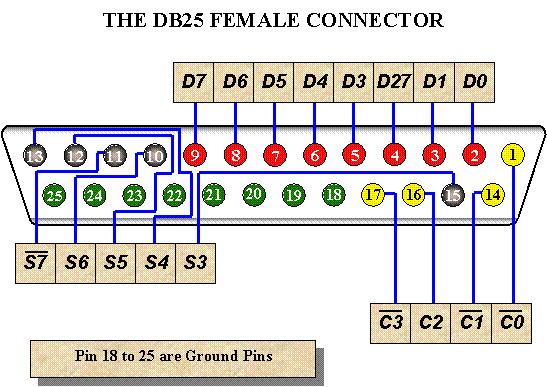|
|
||||||||||||||||
|
|
|||||||||||||||||
|
|
||||||||||||||||
|
|
|||||||||||||||||
|
Syntax:
outportb( address, byte
)
inportb( address )
outp( address, byte
)
inp( address ) Examples are shown on the next page. |
|||||||||||||||||
|
1.
The
Parallel Printer Port 6.
Interfacing with Push Button 10.
Interfacing with Stepper Motor For questions, corrections and suggestions, email to: [email protected] |
|||||||||||||||||
